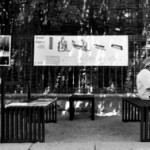Along with the real estate boom of the 2006–2008, there entered the Romanian industrial design market building “industry”- related materials, furniture, systems and subassemblies. The quality of design products increased with the demand requirements generated by the explosion of the offer prices.
In the climate control area there came out installation systems whose design was able to respond to the exaggerated prices of the apartments or the office buildings. The made in italy or made in spain design replaced the usual furniture pieces or the autochthonous systems. It is hard to believe that today, in the living room of a new apartment in Bucharest, it would be accepted what we commonly call „heating radiator” (the white painted layer over layer cast iron object).
This was the background for the successful radiators made by Radox. From the second half of 2008, the market started to shrink rapidly and a great capacity technological line needs, in the current “crisis” context, a reorientation of the offer.
A decorative radiator with the aspect of a wall-hung bench launched the B_RDX project. Starting from this technological line and the standard profiles of the radiators we designed four pieces of anti-destructive urban furniture: two chairs and two benches (models with and without back). Nowadays the urban furniture has functional valences that impose the reorientation of the design concept and determine a new comfort-resistance-use alternative equilibrium.
The benches and the chairs are the result of a serial process of metallic elements that preserve the industrial character and the assembling manner of Radox radiators.
As for the models with back, this one resulted from the stretching of the last frame. Thus the bench becomes interesting even for the contemporary skater and roller “tribes” (more and more present in the public space), who can give an imaginative / spectacular use to the proposed furniture.
This is how is generated the idea of an object whose expressivity may be defined by the constructive system and by the way it manages to adapt to a new dynamics in the public space, which does not exclude “creative destruction” (from graffiti to skate or die).
Photo: Justin Baroncea & Radu Enescu



